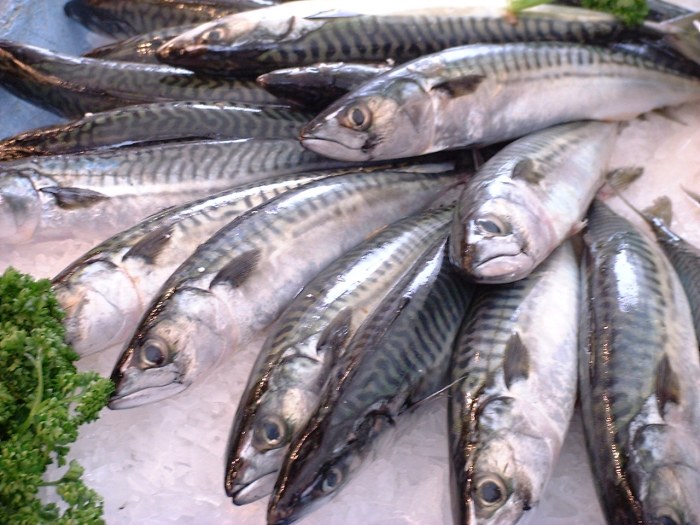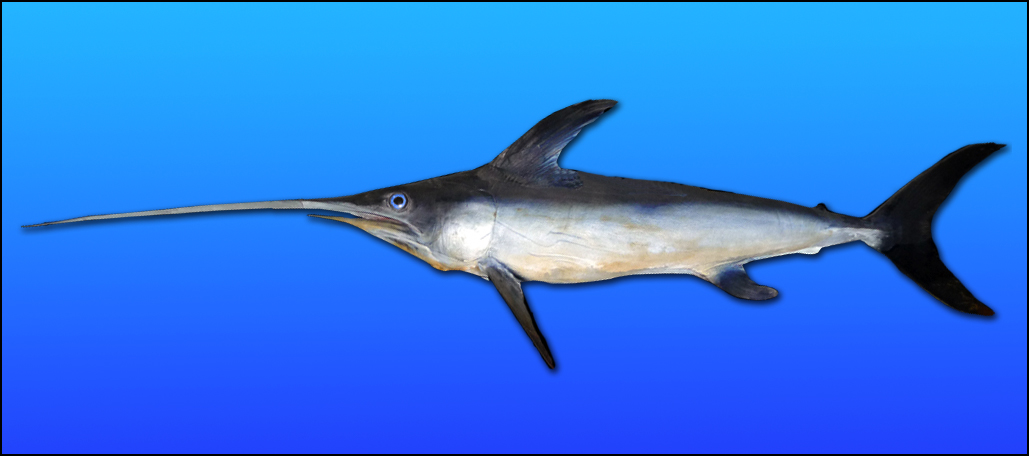|
Mackerel As Food
__NOTOC__ Mackerel is an important food fish that is consumed worldwide. As an oily fish, it is a rich source of omega-3 fatty acids. The flesh of mackerel spoils quickly, especially in the tropics, and can cause scombroid food poisoning. Accordingly, it should be eaten on the day of capture, unless properly refrigerated or cured. Preservation Mackerel preservation is not simple. Before the 19th-century development of canning and the widespread availability of refrigeration, salting and smoking were the principal preservation methods available. Historically in England, this fish was not preserved, but was consumed only in its fresh form. However, spoilage was common, leading the authors of ''The Cambridge Economic History of Europe'' to remark: "There are more references to stinking mackerel in English literature than to any other fish!" In France mackerel was traditionally pickled with large amounts of salt, which allowed it to be sold widely across the country.Clapham JH ... [...More Info...] [...Related Items...] OR: [Wikipedia] [Google] [Baidu] |
Sea Fish Industry Authority
The Sea Fish Industry Authority (or Seafish) is a non-departmental public body in the United Kingdom sponsored by the Department for Environment, Food and Rural Affairs. Established in 1981, and charged with working with the UK seafood industry to promote good quality, sustainable seafood. Seafish revised its mission in 2018. Its new mission is: "Seafood is the way Forward". History Seafish was established in the United Kingdom under the Fisheries Act 1981 through the amalgamation of the Herring Industry Board (founded in 1934) and the White Fish Authority (founded in 1951). Seafish has its administrative base in the Scottish city of Edinburgh and has its research and development base in Grimsby, the UK's main base for the fishing industry and frozen food. The organisation in Grimsby moved into the new Humber Seafood Institute, run by the Grimsby Institute, in July 2008. It was formerly based on St Andrews Dock in Hull. Seafish carries out research and projects aimed at ra ... [...More Info...] [...Related Items...] OR: [Wikipedia] [Google] [Baidu] |
King Mackerel
The king mackerel (''Scomberomorus cavalla'') or kingfish, is a migratory species of mackerel of the western Atlantic Ocean and Gulf of Mexico. It is an important species to both the commercial and recreational fishing industries. Description The king mackerel is a medium-sized fish, typically encountered from to , but is known to exceed . The entire body is covered with very small, hardly visible, loosely attached scales. The first (spiny) dorsal fin is entirely colorless and is normally folded back into a body groove, as are the pelvic fins. The lateral line starts high on the shoulder, dips abruptly at mid-body and then continues as a wavy horizontal line to the tail. Coloration is olive on the back, fading to silver with a rosy iridescence on the sides, fading to white on the belly. Fish under show yellowish-brown spots on the flanks, somewhat smaller than the spots of the Atlantic Spanish mackerel, ''Scomberomorus maculatus''. Its cutting-edged teeth are large, uniform ... [...More Info...] [...Related Items...] OR: [Wikipedia] [Google] [Baidu] |
Shark
Sharks are a group of elasmobranch fish characterized by a cartilaginous skeleton, five to seven gill slits on the sides of the head, and pectoral fins that are not fused to the head. Modern sharks are classified within the clade Selachimorpha (or Selachii) and are the sister group to the rays. However, the term "shark" has also been used to refer to all extinct members of Chondrichthyes with a shark-like morphology, such as hybodonts and xenacanths. The oldest modern sharks are known from the Early Jurassic. They range in size from the small dwarf lanternshark (''Etmopterus perryi''), a deep sea species that is only in length, to the whale shark (''Rhincodon typus''), the largest fish in the world, which reaches approximately in length. Sharks are found in all seas and are common to depths up to . They generally do not live in freshwater, although there are a few known exceptions, such as the bull shark and the river shark, which can be found in both seawater and fresh ... [...More Info...] [...Related Items...] OR: [Wikipedia] [Google] [Baidu] |
Swordfish
Swordfish (''Xiphias gladius''), also known as broadbills in some countries, are large, highly migratory predatory fish characterized by a long, flat, pointed bill. They are a popular sport fish of the billfish category, though elusive. Swordfish are elongated, round-bodied, and lose all teeth and scales by adulthood. These fish are found widely in tropical and temperate parts of the Atlantic, Pacific, and Indian Oceans, and can typically be found from near the surface to a depth of , and exceptionally up to depths of 2,234 m. They commonly reach in length, and the maximum reported is in length and in weight.Gardieff, S. Swordfish.' Florida Museum of Natural History. Accessed 26 December 2011 They are the sole member of their family, Xiphiidae. Taxonomy and etymology The swordfish is named after its long pointed, flat bill, which resembles a sword. The species name, ''Xiphias gladius'', derives from Greek (''xiphias'', "swordfish"), itself from (''xiphos'', "sword") and ... [...More Info...] [...Related Items...] OR: [Wikipedia] [Google] [Baidu] |
Tilefish
250px, Blue blanquillo, ''Malacanthus latovittatus'' Tilefishes are mostly small perciform marine fish comprising the family Malacanthidae. They are usually found in sandy areas, especially near coral reefs. Commercial fisheries exist for the largest species, making them important food fish. However, the U.S. Food and Drug Administration warns pregnant or breastfeeding women against eating tilefish and some other fish due to mercury contamination. Exceptionally colorful smaller species of tilefish are favored for aquariums. Taxonomic issues The family is further divided into two subfamilies: Latilinae, sometimes called the Branchiosteginae, and Malacanthinae. Some authors regard these subfamilies as two evolutionarily distinct families. The placement of this family within the Eupercaria is still not certain. The 5th Edition of Fishes of the World classifies them within the Perciformes but in a grouping of seven families which may have a relationship to Acanthuroidei, Mo ... [...More Info...] [...Related Items...] OR: [Wikipedia] [Google] [Baidu] |
Parts Per Million
In science and engineering, the parts-per notation is a set of pseudo-units to describe small values of miscellaneous dimensionless quantities, e.g. mole fraction or mass fraction. Since these fractions are quantity-per-quantity measures, they are pure numbers with no associated units of measurement. Commonly used are parts-per-million (ppm, ), parts-per-billion (ppb, ), parts-per-trillion (ppt, ) and parts-per-quadrillion (ppq, ). This notation is not part of the International System of Units (SI) system and its meaning is ambiguous. Overview Parts-per notation is often used describing dilute solutions in chemistry, for instance, the relative abundance of dissolved minerals or pollutants in water. The quantity "1 ppm" can be used for a mass fraction if a water-borne pollutant is present at one-millionth of a gram per gram of sample solution. When working with aqueous solutions, it is common to assume that the density of water is 1.00 g/mL. Therefore, it is common to equat ... [...More Info...] [...Related Items...] OR: [Wikipedia] [Google] [Baidu] |
Mercury Poisoning
Mercury poisoning is a type of metal poisoning due to exposure to mercury. Symptoms depend upon the type, dose, method, and duration of exposure. They may include muscle weakness, poor coordination, numbness in the hands and feet, skin rashes, anxiety, memory problems, trouble speaking, trouble hearing, or trouble seeing. High-level exposure to methylmercury is known as Minamata disease. Methylmercury exposure in children may result in acrodynia (pink disease) in which the skin becomes pink and peels. Long-term complications may include kidney problems and decreased intelligence. The effects of long-term low-dose exposure to methylmercury are unclear. Forms of mercury exposure include metal, vapor, salt, and organic compound. Most exposure is from eating fish, amalgam-based dental fillings, or exposure at a workplace. In fish, those higher up in the food chain generally have higher levels of mercury, a process known as biomagnification. Less commonly, poisoning may occur a ... [...More Info...] [...Related Items...] OR: [Wikipedia] [Google] [Baidu] |
Methylmercury
Methylmercury (sometimes methyl mercury) is an organometallic cation with the formula . It is the simplest organomercury compound. Methylmercury is extremely toxic, and its derivatives are the major source of organic mercury for humans. It is a bioaccumulative environmental toxicant. Structure and chemistry "Methylmercury" is a shorthand for the hypothetical "methylmercury cation", sometimes written "''methylmercury(1+) cation''" or "''methylmercury(II) cation''". This functional group is composed of a methyl group bonded to an atom of mercury. Its chemical formula is (sometimes written as ).The Methylmercury compound has an overall charge of +1, with Hg in the +2 oxidation state.Methylmercury exists as a substituent in many complexes of the type (L = Lewis base) and MeHgX (X = anion). As a positively charged ion it readily combines with anions such as chloride (), hydroxide () and nitrate (). It has particular affinity for sulfur-containing anions, particularly thiols (). ... [...More Info...] [...Related Items...] OR: [Wikipedia] [Google] [Baidu] |
Tilefish
250px, Blue blanquillo, ''Malacanthus latovittatus'' Tilefishes are mostly small perciform marine fish comprising the family Malacanthidae. They are usually found in sandy areas, especially near coral reefs. Commercial fisheries exist for the largest species, making them important food fish. However, the U.S. Food and Drug Administration warns pregnant or breastfeeding women against eating tilefish and some other fish due to mercury contamination. Exceptionally colorful smaller species of tilefish are favored for aquariums. Taxonomic issues The family is further divided into two subfamilies: Latilinae, sometimes called the Branchiosteginae, and Malacanthinae. Some authors regard these subfamilies as two evolutionarily distinct families. The placement of this family within the Eupercaria is still not certain. The 5th Edition of Fishes of the World classifies them within the Perciformes but in a grouping of seven families which may have a relationship to Acanthuroidei, Mo ... [...More Info...] [...Related Items...] OR: [Wikipedia] [Google] [Baidu] |
Shark
Sharks are a group of elasmobranch fish characterized by a cartilaginous skeleton, five to seven gill slits on the sides of the head, and pectoral fins that are not fused to the head. Modern sharks are classified within the clade Selachimorpha (or Selachii) and are the sister group to the rays. However, the term "shark" has also been used to refer to all extinct members of Chondrichthyes with a shark-like morphology, such as hybodonts and xenacanths. The oldest modern sharks are known from the Early Jurassic. They range in size from the small dwarf lanternshark (''Etmopterus perryi''), a deep sea species that is only in length, to the whale shark (''Rhincodon typus''), the largest fish in the world, which reaches approximately in length. Sharks are found in all seas and are common to depths up to . They generally do not live in freshwater, although there are a few known exceptions, such as the bull shark and the river shark, which can be found in both seawater and fresh ... [...More Info...] [...Related Items...] OR: [Wikipedia] [Google] [Baidu] |
Swordfish
Swordfish (''Xiphias gladius''), also known as broadbills in some countries, are large, highly migratory predatory fish characterized by a long, flat, pointed bill. They are a popular sport fish of the billfish category, though elusive. Swordfish are elongated, round-bodied, and lose all teeth and scales by adulthood. These fish are found widely in tropical and temperate parts of the Atlantic, Pacific, and Indian Oceans, and can typically be found from near the surface to a depth of , and exceptionally up to depths of 2,234 m. They commonly reach in length, and the maximum reported is in length and in weight.Gardieff, S. Swordfish.' Florida Museum of Natural History. Accessed 26 December 2011 They are the sole member of their family, Xiphiidae. Taxonomy and etymology The swordfish is named after its long pointed, flat bill, which resembles a sword. The species name, ''Xiphias gladius'', derives from Greek (''xiphias'', "swordfish"), itself from (''xiphos'', "sword") and ... [...More Info...] [...Related Items...] OR: [Wikipedia] [Google] [Baidu] |



.jpg)
.jpg)

